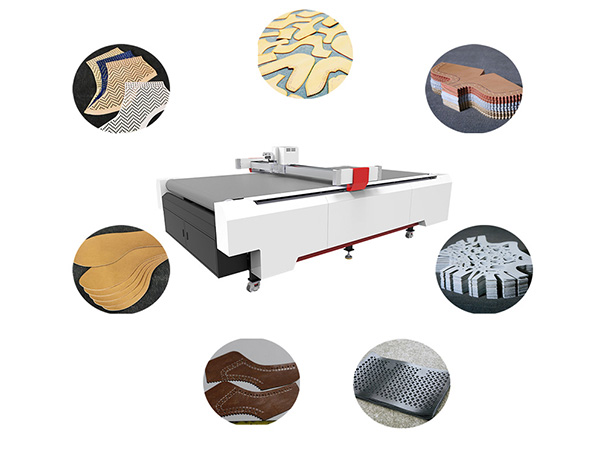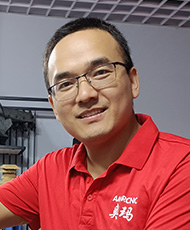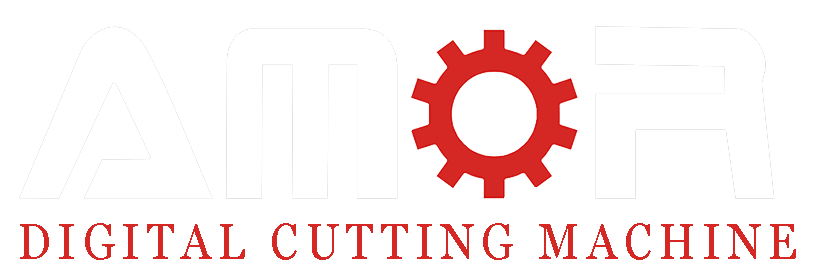Although the feel of the vast majority of artificial leather cannot reach the effect of real leather, artificial leather has many characteristics such as various colors, good waterproofness, neat edges, high utilization rate, and low price. It has also been widely used in the market and is widely used. It is used in the production of bags, shoes, sofas and other industries. How to efficiently complete the rapid cutting of PU leather?
Are you still using manual labor to cut your bags or shoes? Do you still encounter serious waste of materials and high labor costs? Don’t worry, CNC knife cutting machines can solve many problems for you.
The emergence of the AMOR CNC knife cutting machine has completely bid farewell to the era of manual drawing boards and manual shearing. It has moved from the inefficient manual era to the era of industrial intelligence. The handbag cutting machine is operated by a computer, and the computer directly controls the cutting equipment. CNC The knife cutting machine is also called a computer cutting machine. The computer cutting machine supports PLT, DST, DXF, AI, BMP and other file formats. It is also equipped with super typesetting software, which can automatically layout the designed luggage pieces through many manufacturers. Tests show that the super marker software can save more than 10% of materials compared to manual cutting.

Challenges in Using Die Cutting and Manual Cutting for Bag and Shoe Manufacturing
Die cutting and manual cutting are traditional methods commonly used in the manufacturing of bags and shoes. While both techniques have their own merits, they also come with a set of challenges that can impact the efficiency, quality, and cost-effectiveness of production.
Die Cutting
Advantages
Efficiency: Suitable for high-volume production.
Consistency: Produces uniform pieces, ensuring quality control.
Challenges
Limited Flexibility: Not ideal for custom or short-run orders due to the fixed shape of the die.
Die Maintenance: Dies wear out and need to be regularly replaced, adding to operational costs.
Material Waste: Fixed die sizes can lead to inefficient material usage, especially for irregular shapes.
Manual Cutting
Advantages
Flexibility: Ideal for custom orders and complex designs.
No Tooling Costs: No need for die manufacturing, reducing initial costs.
Challenges
Labor Intensive: Requires skilled labor, which can be expensive and time-consuming.
Inconsistency: Human errors can result in irregular shapes and sizes, affecting quality.
Low Efficiency: Manual processes are generally slower, affecting production throughput.
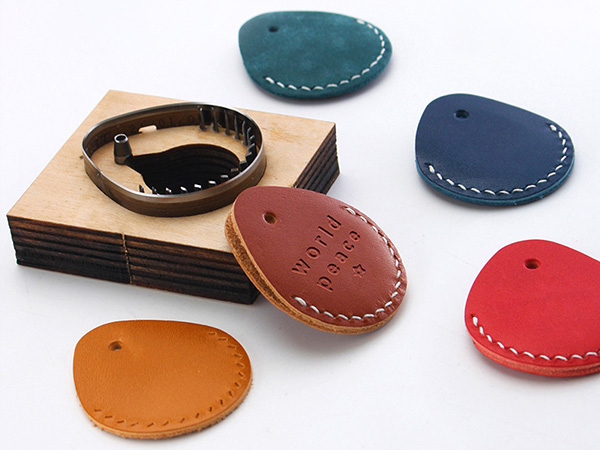
Common Challenges for Both Methods in Bag and Shoe Manufacturing
Material Limitations: Both methods may struggle with certain types of materials, like very thick or delicate leathers.
Quality Control: Achieving consistent quality can be challenging, particularly for intricate designs.
Waste Management: Both methods can produce material waste, which is both costly and environmentally unfriendly.
While die cutting offers speed and consistency, its lack of flexibility makes it less suitable for custom or low-volume production. On the other hand, while manual cutting offers greater flexibility, it is labor-intensive and prone to inconsistencies. Advanced technologies like CNC Oscillating Knife Cutting Machines provide a balanced solution, offering the efficiency of die cutting and the flexibility of manual cutting, making it an increasingly popular choice in the modern manufacturing landscape for bags and shoes.
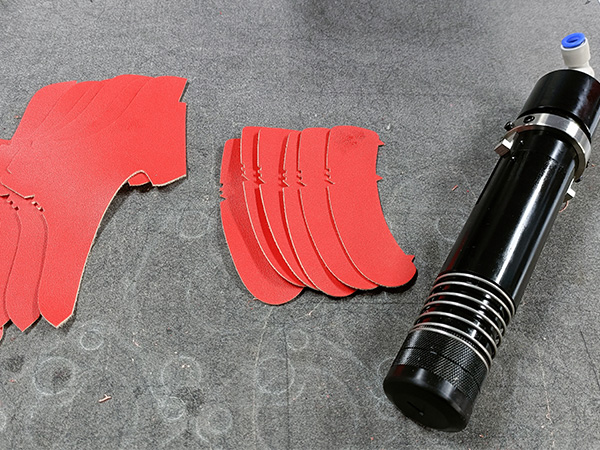
Advantages of CNC Leather Cutting Machines: Efficiency, Versatility, and Precision
CNC Leather Cutting Machines offer an array of functional benefits that make them indispensable tools in various industries like footwear, bag manufacturing, automotive, and furniture. Below are some key advantages, outlined in a straightforward and easy-to-understand manner.
- Multi-Functional and Efficient
CNC machines integrate high-efficiency multi-layer cutting, intelligent auto-layout, and continuous operation features. This makes them ideal for industries that require multiple short runs. - No Need for Die Cutting
Eliminate the need for creating cutting dies, saving both time and labor costs. With real-time computer control, these machines can cut 1 to 20 layers of PU in one go, boosting productivity by up to 20 times compared to traditional single-layer cutters. - Versatile Cutting Options
Easily swap out cutting tools and adjust cutting depths to work with any shape, layer count, or thickness of PU material. The machine’s interactive functions allow for simultaneous layout, cutting, and material collection, maximizing efficiency. - Optimized Material Usage
The automatic layout cutting system ensures maximum material utilization, significantly reducing waste and costs. - Multi-Functional Cutting Head
Highly integrated cutting heads can perform multiple tasks at once, including cutting, punching, drawing, and marking, streamlining the production process. - Precision in Complex Cuts
CNC machines can precisely cut complex shapes in bags, like internal windows, zipper slots, and notches, while handling multiple layers of material.

AMOR1625 BMK CNC Leather Cutting Solution
Key Features
The AMOR1625 BMK CNC Leather Cutting Machine is designed to address the challenges and meet the demands of various industries, including footwear, bag manufacturing, automotive interiors, and furniture. This state-of-the-art solution combines cutting-edge technology with intelligent features to offer a comprehensive leather cutting solution.
High-Speed Multi-Layer Cutting
Efficiency: Capable of high-speed, multi-layer cutting, the AMOR1625 BMK maximizes production throughput.
Intelligent Layout: Features like automatic nesting ensure optimal material usage, reducing waste and increasing profitability.
Die-less Operation
Cost-Efficiency: Eliminates the need for physical dies, saving on labor and material costs.
Real-time Cutting: Immediate data transfer from computer to machine allows for real-time, efficient cutting operations.
Versatility in Cutting
Tool Flexibility: Easily interchangeable cutting heads and adjustable blade depths allow the machine to cut various shapes, thicknesses, and types of materials.
Interactive Functions: Simultaneous layout, cutting, and material collection functions maximize machine efficiency.
Material Optimization
Waste Reduction: Intelligent nesting and layout features minimize material waste.
Automated Systems: The machine’s automation features reduce manual intervention, improving accuracy and efficiency.
Integrated Multi-Functional Head
All-in-One Operations: The machine can perform multiple tasks like cutting, punching, drawing, and marking, all in a single run, streamlining the manufacturing process.
Precision in Complex Designs
Accuracy: Exceptional precision in cutting intricate shapes, internal windows, zipper slots, and notches in bags and other products.
Benefits to Your Business
Enhanced Productivity: Faster cutting speeds and automated features boost production rates.
Reduced Costs: Optimized material usage and elimination of the need for dies cut down on operational costs.
Quality and Consistency: High-precision cutting ensures consistent quality across all products.
AMOR1625 BMK CNC Leather Cutting Machine offers a highly efficient, precise, and versatile cutting solution. With its range of features geared towards optimizing both material usage and operational efficiency, this machine is an invaluable asset for businesses looking to stay competitive in today’s fast-paced market.

AMOR CNC Leather Cutting Machine: Features and Configurations
AMOR CNC Leather Cutting Machine is designed with a robust set of features that deliver efficiency, versatility, and precision. Below is a straightforward breakdown of the machine’s key configurations.
Core Configurations
Powerful Oscillating Knife Head
Strength and Speed: An electric oscillating knife head that vibrates at up to 22,000 times per minute for powerful and precise cutting.
Tool Design: The head tool features a combined oscillating knife design for versatile cutting options.
Conveyor Bed Structure
Efficiency: Designed with a conveyor belt layout, enabling continuous material feeding and saving labor time.
User-Friendly: Neatly arranged control panel buttons, simple software interface, and multi-layer feed racks that can feed up to four rolls of material at once, making it extremely convenient for factory operations.
Integrated Aluminum Platform
Durability: Utilizes a honeycomb structure for sturdiness, corrosion-resistance, sound absorption, and insulation.
High-Resolution Short-Focus Projection
Clarity: Offers 1:1 pattern output through direct short-focus projection, making the workflow clearer and more intuitive.
Anti-Vibration Projection Stand
Stability: A separate anti-vibration design minimizes machine-induced projection distortions, ensuring stable projections during operations.
Interactive Features
Efficiency: Allows simultaneous layout, cutting, and material collection, maximizing machine productivity.
Multi-Functional Cutting Head
Versatility: Capable of performing multiple tasks, including cutting, punching, drawing, and marking, in a single run.
Proprietary Auto-Layout Cutting System
Optimization: Specially designed for leather and PU materials, this system maximizes material usage and eliminates the need for software upgrades.
Software Compatibility
Simplicity: Supports universally accepted DXF and HPGL formats, avoiding compatibility issues between different software and simplifying the workflow.

Tool Configurations for Optimal Leather Cutting Efficiency
With years of development, CNC leather cutting machines are extensively used in industries dealing with flexible materials like footwear and bags. Thanks to technological advancements, these machines have evolved from single-knife head configurations to multi-knife setups, enhancing both cutting efficiency and quality.
Core Tool Configurations
Oscillating Tools
Pneumatic Oscillating Tool: Suitable for cutting 1-20 layers of PU leather and Oxford fabric.
Electric Oscillating Tool: Ideal for fast, single-layer PU leather cutting.
Punching Tools
Punching Tool: Designed for quickly punching small holes and notches ranging from 1-5mm.
Marking Tools
Marking Tool: Capable of marking text on the material surface for easy identification.
Dual-Cutting Systems for Maximum Efficiency
AMOR CNC machines offer the flexibility to configure two sets of cutting systems on a single machine.
Dual Synchronized Cutting System: Features two sets of cutting tools side-by-side on a single beam. They can either operate independently or simultaneously cut the same pattern, effectively doubling the cutting speed.
Dual Independent Cutting System: Consists of two completely electrically independent sets of knife heads. They can operate separately or in tandem on different patterns. This design maximizes efficiency on large materials and minimizes waste on smaller ones by allowing operators to configure the heads flexibly.
AMOR’s recommended tool configurations for leather cutting are designed to maximize efficiency and adaptability. Whether you’re working on high-volume production or custom jobs, these tool setups provide the flexibility and speed you need to get the job done right and on time.

How AMOR CNC Leather Cutting Machines Work
Understanding the operational workflow of AMOR CNC Leather Cutting Machines can provide valuable insights into their efficiency, precision, and versatility. This guide outlines the steps involved in the cutting process.
Step 1: Material Loading
Load the material onto the conveyor bed of the machine. If you’re dealing with multi-layer materials, stack them according to specifications.
Step 2: Pre-Processing and Calibration
Turn on the machine and calibrate the cutting head and tools.
The pneumatic or electric oscillating tool is selected based on the material type and thickness.
Step 3: File Import and Layout
Import the cutting design file, usually in DXF or HPGL format, into the machine’s software.
Use the intelligent auto-layout function to optimize material usage.
Step 4: Projection and Verification
A high-resolution short-focus projector displays a 1:1 pattern on the material for visual verification.
Make any necessary adjustments before initiating the cutting process.
Step 5: Cutting Execution
Activate the cutting process. The oscillating knife will begin to cut the material according to the loaded design.
If the machine is configured with a dual cutting system, both knife heads will operate either synchronously or independently based on the settings.
Step 6: Punching and Marking (If Required)
The machine switches to the punching tool for making holes or notches if the design demands it.
A marking tool can also be activated to label the material for future identification.
Step 7: Material Ejection and Collection
Once the cutting is complete, the conveyor belt moves the cut pieces to the collection area.
If the machine is equipped with an automatic material collection system, the cut pieces are neatly stacked for easy removal.
Step 8: Post-Processing and Quality Check
Perform a quality check to ensure all cuts are accurate and clean.
The machine is then ready for the next batch of material or a different cutting task.

